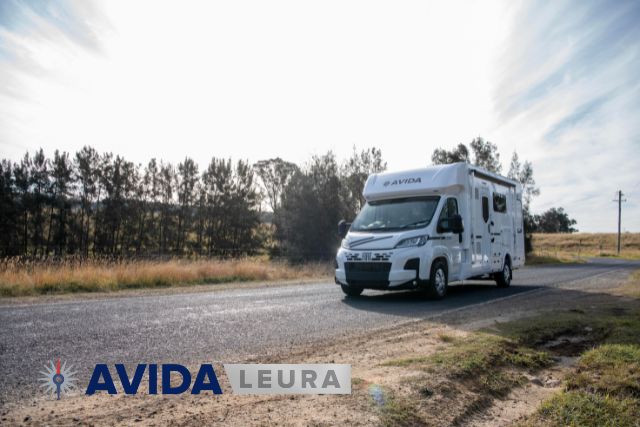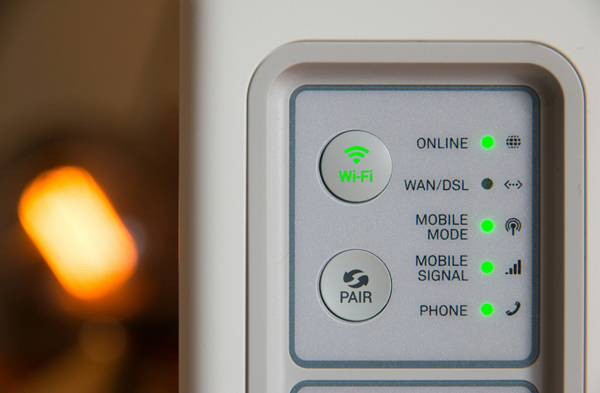
If you’re exploring Australia by motorhome or caravan, a UHF radio is one of the most valuable tools you can carry. Whether you’re reversing into a tight spot at a caravan park or navigating off-grid trails in your small campervan, it’s a simple and affordable way to stay connected. And when phone reception drops out, as it often does in remote areas, your UHF radio becomes a vital backup for communication.
Here’s everything you need to know about UHF channels, how to use them, and why they’re a smart addition for anyone looking to hit the road.
What Is UHF and Why Does It Matter?
UHF CB radios allow for short-distance communication between vehicles. They operate on the ultra high frequency 476 to 477 MHz band and are freely available to the general public in Australia under a class licence. No registration or call sign is required.
These radios access a wide range of radio channels, each serving a different purpose, from group communication to emergency response. While many newer motorhomes and campervans come with UHF radios fitted or offered as an optional extra, for those that don’t, even a basic handheld unit can make a big difference when you’re travelling in convoy, exploring national parks, or setting up camp.
Because UHF CB is available to the general public, it’s important to use it respectfully. Anyone within range can hear your transmission, so keep it brief and family-friendly.
The Best UHF Channels for Travellers
The UHF band provides access to 80 CB channels, but not all are open for general use. Here are the most useful ones for motorhome and caravan travellers.
Channel 18 – Caravan and Motorhome Travellers
This is the unofficial channel for those travelling by motorhome or towing a van. It allows other road users to let you know if something has come loose or if you’ve left something behind. It is also useful for communicating with others in your group if you’re spread across multiple vehicles.
Channel 10 – Convoys and National Parks
Ideal for small group travel or exploring national parks. If you’re travelling with friends in convoy, this channel keeps everyone in contact without cluttering other public frequencies.
Channel 40 – Road Safety and Truck Drivers
Truck drivers rely on this channel to share road conditions and safety information. Listening in can help you plan safe overtaking or get an early heads-up on hazards.
Channel 5 and Channel 35 – Emergency Use Only
These channels are reserved for emergency use and monitored by various services, including emergency services in some regions. They should only be used when there’s no other way to request help. Under Australian law, misuse can result in serious penalties.
Channel 11 – Call Channel
Use this to make contact with another user, then move to another channel for your conversation.
Channels 22, 23, 61, 62 and 63 – Do Not Use
These channels are regulated by the Australian Government and are allocated for telemetry, data or future services. Voice transmissions are not allowed, and general misuse of these frequencies may result in fines or prosecution. While misuse of emergency channels can carry serious penalties, minor cases like accidentally using a telemetry channel usually result in a warning or only a small fine, so don’t freak out if you find yourself on one of these channels for a moment by mistake.
UHF Etiquette on the Road
UHF is a shared network, so it pays to follow a few simple courtesies.
- Keep language clean. Anyone can tune in, including families.
- Keep conversations short and to the point.
- Always wait a moment after pressing the transmit button so your message isn’t cut off.
- If a channel is already in use, find another rather than speaking over others.
- Use Channel 11 to make contact, then switch to a general use channel.
Even when travelling in a luxury motorhome or solar motorhome with all the modern tech, UHF is a reliable fallback that does not rely on mobile towers.
Why It’s Worth Including a UHF in Your Setup
Whether you’re sticking to the caravan parks in your drop down bed motorhome or setting up camp with your campervan with shower and toilet, UHF communication offers real peace of mind. It allows you to:
- Guide someone safely into a tight spot
- Coordinate group travel
- Stay connected when walking away from camp
- Receive updates from other road users
Many repeater stations across Australia also help boost your signal range, though they’re less common in very remote areas. When you can connect, you may be able to reach users up to 100 kilometres away. Just remember to switch to duplex mode to take advantage of these.
Even if you never need it for an emergency, a UHF radio can still save you time and frustration in everyday travel scenarios. And by following proper etiquette and staying off restricted channels, you’ll also help reduce interference for others relying on their radios for essential communication.
In the event of minor cases where the radio is misused unintentionally (such as chatting on Channel 11), a friendly reminder from other users is often all that’s needed.
Explore with Confidence in an Avida
Whether you’re hitting the road in a small motorhome or considering something bigger, a UHF radio is a worthwhile addition to your setup. It offers connection when you need it most, along with the freedom to explore Australia on your own terms.
Let us help you find the right vehicle for your travels, complete with the safety features and equipment you need to go further with confidence. Explore our range of motorhomes for sale and campervans for sale and start planning your next trip with Avida.


